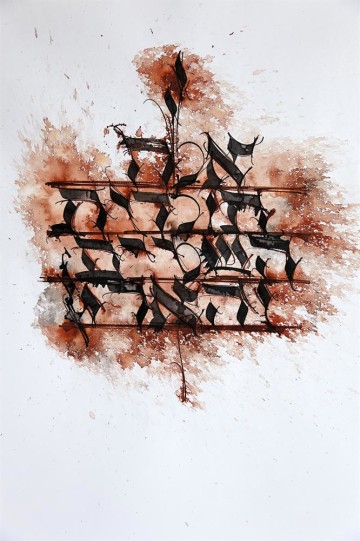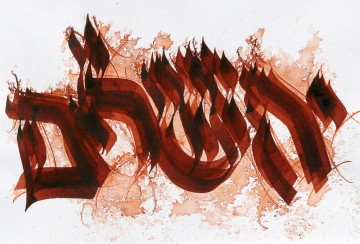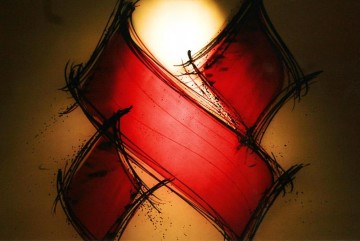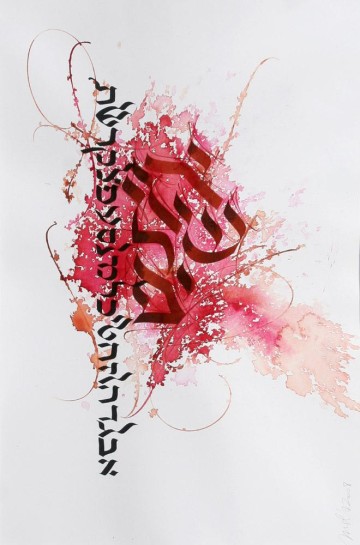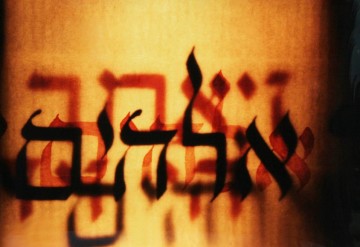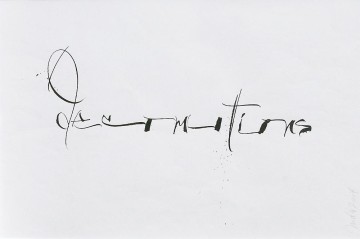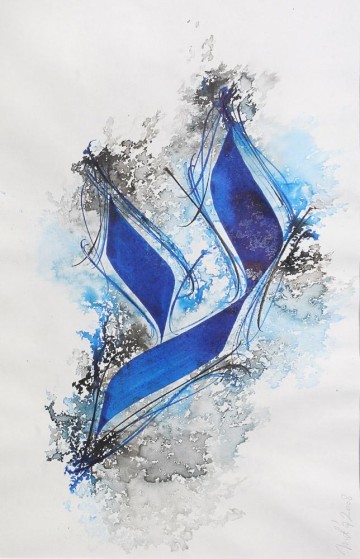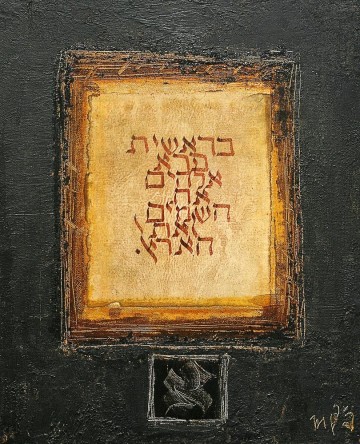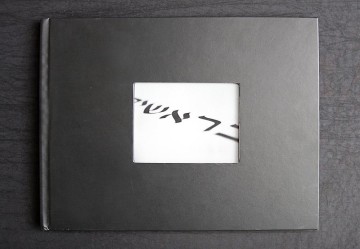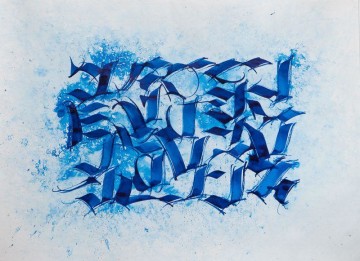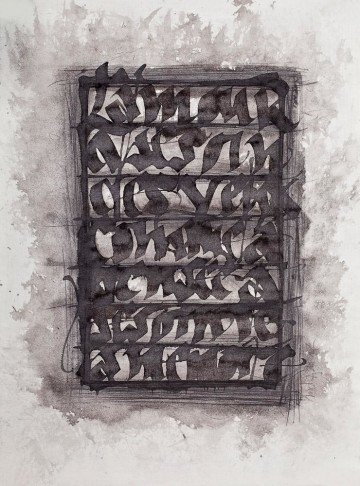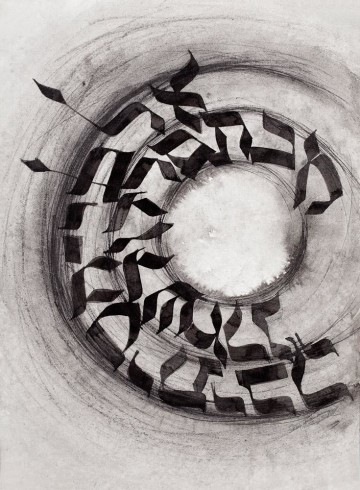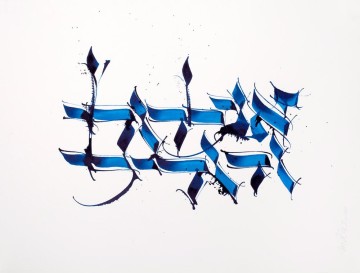Michel D`Anastasio
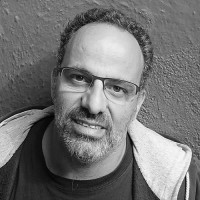
Michel D`Anastasio
Paris, France
Calligrapher, painter, graphic designer
Left-handed Calligraphy is an art in its own right
To become an art it needs and requests lots of hard work, research, and several years for the development and evolution to gain its mastership – in this moment, suddenly, you find yourself in the state when you can say: I am a calligrapher! The Calligraphy is still very difficult and complex for me because I am left-handed.
During the phase of learning and developing yourselves you have to be sure of one thing: the fact that you must continue on this path and find the will to do it yourself by making up your own method. Being a pupil I met with teachers who could not help me. They only judged my work and that was what brought me sureness of persevering my way of doing things. It was necessary for me to find personal solutions before arriving to satisfaction.
And it has been done: “Slope of paper, my focus, my way, waiting for the drying of the lines before I continue to write another letter…”
From a certain point of view ability of the calligraphic letter to get your entire attention and ease of control of the sign gesture opens new horizons. After the lines and ink here come new dimensions of calligraphic work: colours, materials, and techniques helping you to create your personal touch, clarity of natural, the sign that is released in confrontation with the contrast of colours and forms. It is powerful! It is an achievement of research through matters and forms.
This art brings a multitude of creative possibilities, using traditional materials or even more innovative and surprising objects, such as a coke-can pen (pen folder), toothpicks, fabrics, cardboard, pieces of metal, and all variety of objects found.
After years of my artistic occupation with Roman letters I discovered the beauty of the Hebrew alphabet some five years ago. Hebrew calligraphy is rare in France, made only by “Sofers”(calligraphers whose occupation is based on writing religious texts). In the eyes of French society the term “calligraphy” refers mainly to Oriental calligraphy or the Chinese and Japanese art of writing. In the case of Hebrew calligraphy people usually classify Hebrew signs to Judaism. It is all wrong! Even western Latin calligraphy has yet great teachers who have tried and are still promoting the Roman alphabet art of writing. As some associations establish artistic calligraphy courses for their students to discover the multitude of signs and give some space to other and creative compositions. In general, calligraphy remains unknown and hidden in book-stores which classify and see it as a hobby and is rather ranked in “decoration” more than art. In the same way it is with art galleries where managers consider calligraphy to not be an art; this is very sad.
For a calligrapher like me, calligraphy opens (especially Latin and Hebrew) new horizons, and it is not only working on paper or cloth but it also drives me to new expressions such as photography. I enjoy capturing my hand-writing in still-pictures: the play of light, shadows and colour contrast, which provides a major step of modernity and creativity. Is it a new art form of calligraphy? The photographs of calligraphic works led me to the transforming calligraphic work on objects of daily use: lamps, business cards, stamps, invitations etc. There is my point and I like to see this magnificent art expression: everywhere, accessible to everyone – on daily basis.
